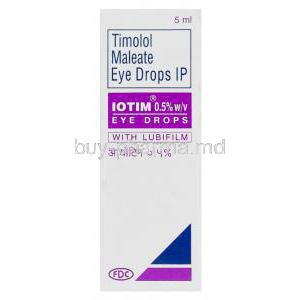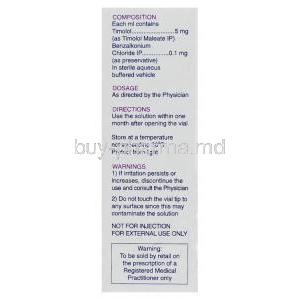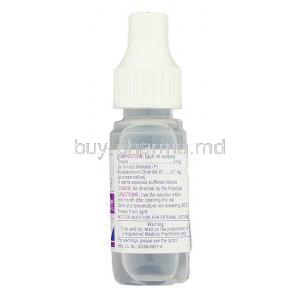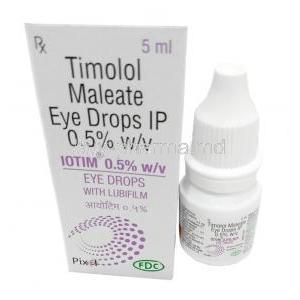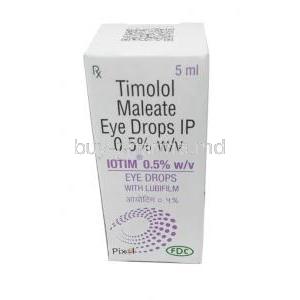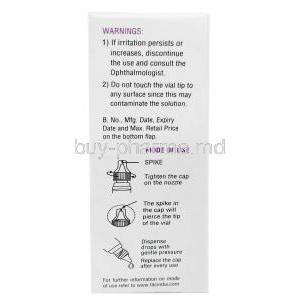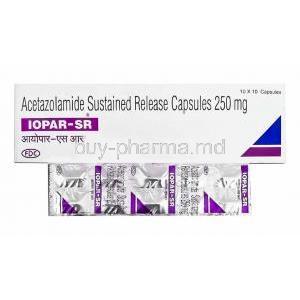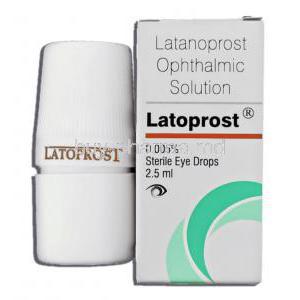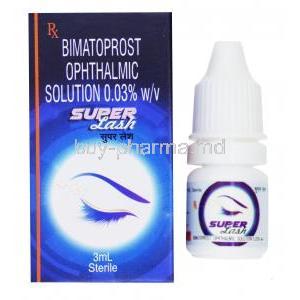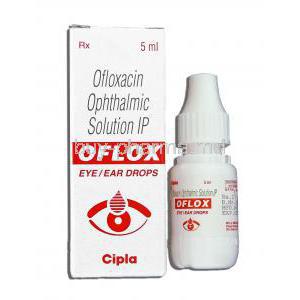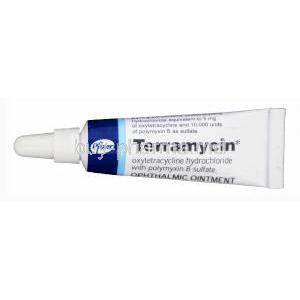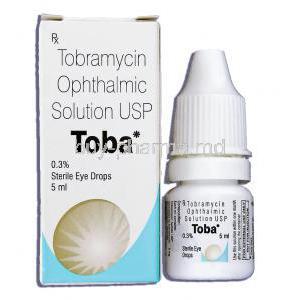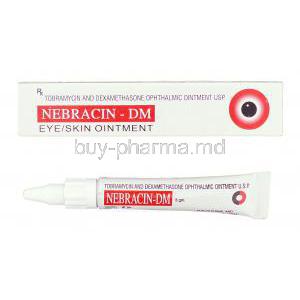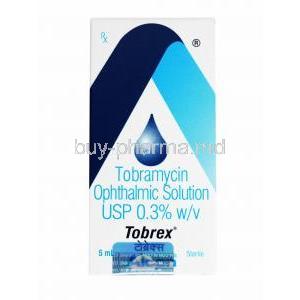Introduction
Overview of Iotim Eye Drops
Iotim Eye Drops are a trusted ophthalmic solution designed to lower elevated intraocular pressure. Containing timolol maleate, a potent beta-adrenergic receptor antagonist, these drops are frequently prescribed in the management of glaucoma and related ocular conditions. The formulation offers rapid onset of action and sustained therapeutic efficacy, making it a mainstay in eye care practice.
Therapeutic classification of timolol maleate
Timolol maleate belongs to the class of non-selective beta-adrenergic blockers. Unlike systemic beta-blockers used for cardiovascular conditions, its ophthalmic formulation targets the eye directly. This precision in administration reduces intraocular pressure and contributes to the preservation of optic nerve health.
Importance in ophthalmology and glaucoma management
Glaucoma remains a leading cause of irreversible blindness worldwide. Managing intraocular pressure is critical to prevent optic nerve damage. Timolol-based formulations such as Iotim Eye Drops offer a cornerstone therapy, either as monotherapy or in combination with other agents, to slow disease progression and preserve vision.
Composition and Formulation
Active ingredient: Timolol Maleate
Each milliliter of Iotim Eye Drops contains timolol maleate, the pharmacologically active component. This molecule is structurally designed to inhibit beta-receptors within ocular tissues, contributing to effective pressure reduction.
Available strengths and dosage forms
Iotim is commonly available in concentrations of 0.25% and 0.5%. These varying strengths enable physicians to tailor therapy according to disease severity and patient tolerance. Supplied in sterile dropper bottles, the formulation ensures convenient administration.
Inactive ingredients and preservatives
The solution typically contains stabilizers and preservatives such as benzalkonium chloride, which maintain sterility and prolong shelf life. Buffered agents ensure optimal pH, minimizing ocular irritation while preserving therapeutic potency.
Mechanism of Action: How Iotim Eye Drops Work
Beta-adrenergic receptor blockade in the eye
Timolol maleate acts by competitively inhibiting beta-adrenergic receptors located in the ciliary epithelium of the eye. This blockade interrupts sympathetic stimulation, leading to reduced aqueous humor formation.
Reduction of aqueous humor production
By decreasing aqueous humor secretion, Iotim reduces the volume of intraocular fluid. The subsequent lowering of pressure within the eye directly mitigates the risk of glaucomatous damage.
Effect on intraocular pressure (IOP)
The reduction in IOP typically begins within 30 minutes of instillation. Peak efficacy is reached within 1–2 hours and sustained pressure control can last up to 24 hours with proper dosing.
Comparison with other antiglaucoma medications
- Prostaglandin analogs: Increase aqueous outflow rather than reducing production.
- Carbonic anhydrase inhibitors: Act on enzymatic pathways to decrease fluid formation.
- Alpha-agonists: Provide dual action—reduced production and increased drainage.
Timolol stands apart due to its rapid onset, cost-effectiveness, and extensive clinical track record.
Approved Uses of Iotim Eye Drops
Primary open-angle glaucoma
The principal indication for Iotim Eye Drops is primary open-angle glaucoma, the most prevalent form of the disease. Consistent use lowers IOP and slows the progressive loss of peripheral vision.
Ocular hypertension
In patients with elevated IOP but no evident optic nerve damage, timolol is prescribed as a preventive measure to reduce the likelihood of conversion to glaucoma.
Secondary glaucoma (including aphakic and angle-closure adjunctive use)
Timolol may also be used in secondary forms of glaucoma, including aphakic glaucoma that arises after cataract removal, and as adjunctive therapy in angle-closure glaucoma following relief of pupillary block.
Off-Label Uses of Timolol Maleate Eye Drops
Management of migraine prophylaxis (ophthalmic route adjunct)
Although oral beta-blockers are standard for migraine prophylaxis, topical timolol has shown benefit in select cases, possibly reducing attack frequency when systemic therapy is not tolerated.
Treatment of infantile hemangiomas (select cases)
Emerging clinical studies highlight the use of topical timolol for superficial infantile hemangiomas, leveraging its vasoconstrictive and anti-proliferative properties.
Reduction of intraocular pressure in steroid-induced glaucoma
Timolol is sometimes used when corticosteroid therapy elevates IOP. By counteracting this effect, it protects patients requiring long-term steroid use from additional ocular complications.
Adjunct therapy in post-surgical ocular hypertension
After ocular surgeries, transient IOP elevation is common. Iotim can be used to stabilize pressure during postoperative recovery, minimizing stress on ocular tissues.
Dosage and Administration Guidelines
Standard adult dosing recommendations
The usual starting dose is one drop of 0.25% or 0.5% solution administered twice daily. Based on clinical response, dosing may be adjusted by the treating physician.
Administration technique for eye drops
- Wash hands thoroughly before use.
- Tilt the head back and gently pull down the lower eyelid.
- Instill one drop into the conjunctival sac without touching the dropper tip to any surface.
- Apply gentle pressure to the inner canthus (punctal occlusion) for 1–2 minutes to reduce systemic absorption.
Dosage adjustments in patients with renal or hepatic impairment
Although primarily acting locally, systemic absorption can occur. Patients with significant renal or hepatic dysfunction require cautious administration and close monitoring.
Missed dose instructions
If a dose is missed, it should be instilled as soon as remembered. However, if it is near the time of the next dose, the missed dose should be skipped to avoid doubling.
Administration in Special Populations
Elderly patients: safety considerations and dose adjustments
In elderly individuals, physiological changes in cardiovascular and respiratory function necessitate careful titration of therapy. While the standard dosing regimen may be applicable, heightened sensitivity to systemic beta-blockade requires vigilant monitoring. Dose adjustments are considered if bradycardia, hypotension, or excessive fatigue emerges during therapy.
Pregnant women: fetal safety data and risk-benefit assessment
Use of timolol in pregnancy is generally approached with caution. Animal studies suggest potential risks to fetal development, though conclusive human data remain limited. The decision to prescribe Iotim Eye Drops during pregnancy requires a careful assessment of maternal benefit against fetal risk, especially when untreated glaucoma poses a threat to vision preservation.
Nursing mothers: excretion in breast milk and recommendations
Timolol is known to be excreted in breast milk, potentially exposing the nursing infant to systemic beta-blockade. While topical administration reduces systemic exposure, measurable concentrations can still occur. Physicians often recommend either discontinuing breastfeeding or selecting an alternative treatment when prolonged therapy is necessary.
Pediatric patients: safety, dosing, and efficacy in children
Data regarding pediatric use of timolol remain limited. Safety concerns arise due to the potential for systemic side effects such as respiratory depression and bradycardia. For this reason, routine use in children is not advised unless the therapeutic benefits substantially outweigh the risks, and dosing should be carefully supervised by a pediatric ophthalmologist.
Side Effects of Iotim Eye Drops
Common side effects:
- Transient eye irritation, burning, or stinging sensation after instillation
- Dry eyes or episodic blurred vision
- Headache, dizziness, or mild fatigue
Serious adverse reactions:
- Bradycardia, heart block, or exacerbation of pre-existing cardiac conditions
- Bronchospasm in patients with asthma or chronic obstructive pulmonary disease
- Depression, mood alterations, and rarely confusion
- Severe ocular reactions including corneal inflammation or keratitis
Warnings and Precautions
Risk of systemic absorption and cardiovascular effects
Although administered topically, timolol can be absorbed into systemic circulation. This absorption may result in clinically significant reductions in heart rate and blood pressure.
Caution in patients with asthma, COPD, or other respiratory disorders
Beta-blockade may precipitate bronchospasm in predisposed individuals. Patients with known respiratory compromise should avoid or use Iotim under strict medical supervision.
Potential masking of hypoglycemia in diabetic patients
Timolol may obscure early adrenergic warning signs of hypoglycemia, such as tachycardia. Diabetic patients using insulin or oral hypoglycemics should be advised accordingly.
Need for gradual withdrawal to prevent rebound effects
Sudden cessation may lead to rebound hypertension or acute elevation in intraocular pressure. Discontinuation should always be supervised with gradual tapering.
Contraindications
- Known hypersensitivity to timolol or any formulation component
- Sinus bradycardia, second- or third-degree atrioventricular block
- Overt or uncompensated cardiac failure
- Bronchial asthma or history of severe chronic obstructive pulmonary disease
Drug Interactions
Interaction with other beta-blockers (oral or topical)
Concurrent administration may amplify systemic beta-blockade, leading to exaggerated cardiovascular suppression.
Additive effects with calcium channel blockers and digitalis
Combined use can heighten the risk of atrioventricular conduction disturbances or excessive bradycardia.
Interaction with CNS depressants and anesthetic agents
General anesthetics and sedatives may intensify the hypotensive and bradycardic effects of timolol. Preoperative disclosure of therapy is crucial.
Potential interactions with antidepressants and antiarrhythmics
Tricyclic antidepressants, selective serotonin reuptake inhibitors, and antiarrhythmic drugs may alter timolol’s hemodynamic profile, necessitating dose adjustments or monitoring.
Important Precautions and Careful Administration
Proper instillation technique to reduce systemic absorption
Correct instillation minimizes contamination and ensures effectiveness. Patients should avoid contact between the dropper tip and ocular surfaces.
Use of punctal occlusion method after administration
Applying gentle pressure to the nasolacrimal duct for 1–2 minutes reduces systemic absorption and lowers the risk of systemic side effects.
Monitoring intraocular pressure during long-term use
Regular IOP assessments and optic nerve evaluations are essential to confirm ongoing therapeutic benefit and prevent progression of glaucoma.
Avoiding abrupt discontinuation without medical advice
Therapy should only be modified or discontinued under medical supervision to avoid rebound complications.
Overdosage and Emergency Management
Symptoms of overdose: severe bradycardia, hypotension, bronchospasm
Excessive dosing or accidental ingestion can lead to life-threatening systemic effects requiring urgent care.
Emergency interventions and supportive care
Immediate measures include airway management, oxygen therapy, and intravenous fluids to stabilize hemodynamics.
Role of systemic beta-blocker antidotes (e.g., atropine, glucagon)
Specific antidotes such as intravenous atropine for bradycardia and glucagon for severe beta-blocker toxicity may be administered in emergency settings.
Handling and Storage Precautions
Storage temperature and light sensitivity
Iotim Eye Drops should be stored at controlled room temperature, protected from direct sunlight and excessive heat.
Shelf life and expiration considerations
Products should be used before the labeled expiration date. Opened bottles are generally recommended for use within one month to minimize microbial contamination.
Safe handling to prevent contamination of dropper tip
The dropper tip must remain uncontaminated by avoiding contact with eyelids, skin, or any surface. Contaminated bottles risk introducing ocular infections.
Disposal of unused or expired eye drops
Unused or expired medication should be disposed of safely, following local pharmaceutical disposal guidelines, to prevent accidental ingestion or misuse.
Duration of therapy and monitoring needs
Iotim Eye Drops are typically prescribed as long-term therapy. Regular ophthalmic evaluations are essential, including IOP measurements and optic nerve assessments, to ensure continued efficacy and safety.


